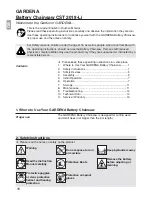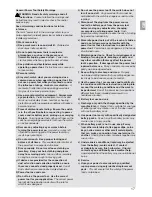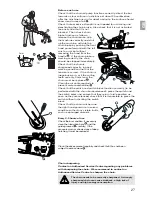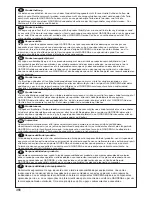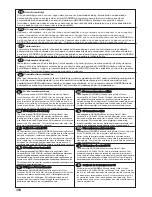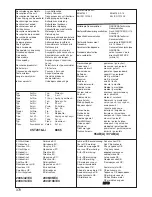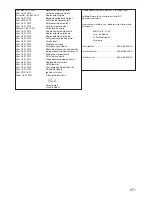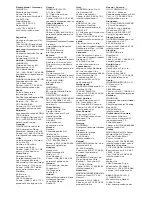
Below are descriptions of typical cutting procedure to be adopted for
specific situations. However, these should be assessed each time to
calculate whether the method is most suitable or not, In order to use a
method with the least possible risk.
Trunk on the ground.
(Risk of touching the ground with the chain once
the bar has passed trough the trunk)
.
Cut from top to bottom through the whole trunk. Towards the end of the
cut, proceed very carefully to prevent the chain from hitting the ground.
If it is possible, cut 2/3 of the trunk, roll it over, and cut the remaining
third from top to bottom to limit the risk of the chain touching the ground.
Trunk supported at one end only
(Risk of trunk breaking during cut-
ting action)
.
Begin the cut from underneath for about 1/3 of the diameter, and then
finish the cutting action from the top to meet the undercut.
Trunk supported at both ends.
(Risk of pinching the chain)
.
Begin the cut from above for about 1/3 of the diameter, and then con-
tinue from underneath to meet the overcut.
Trunk laying on a slope.
Always stand on the uphill side of the log.
When ʻcutting throughʼ, to maintain complete control, release the
cutting pressure near the end of the cut without relaxing your grip
on the chainsaw handles. Do not let the chain contact the ground.
36
35
34
34
35
36
Tree Felling
When felling a tree, the aim is to have the tree fall in the most
convenient position for the following limbing and bucking
operations. (Avoid trees falling on top of other trees: Felling trees
that are entangled with other trees is a very dangerous operation).
First of all decide which is the best direction for the tree to fall by
evaluating the following: objects or other plants around the tree, the
inclination, the curve, wind direction, and greatest branch
concentration. Take into account dead or broken branches that
may break off during felling creating a further danger risk.
ATTENTION!
: Never attempt to fell a tree if you do not
have the necessary experience, and in any case never
fell trees that have trunks with a diameter larger than
the length of the bar! This operation is reserved for
expert machine users with adequate equipment.
GB
24


